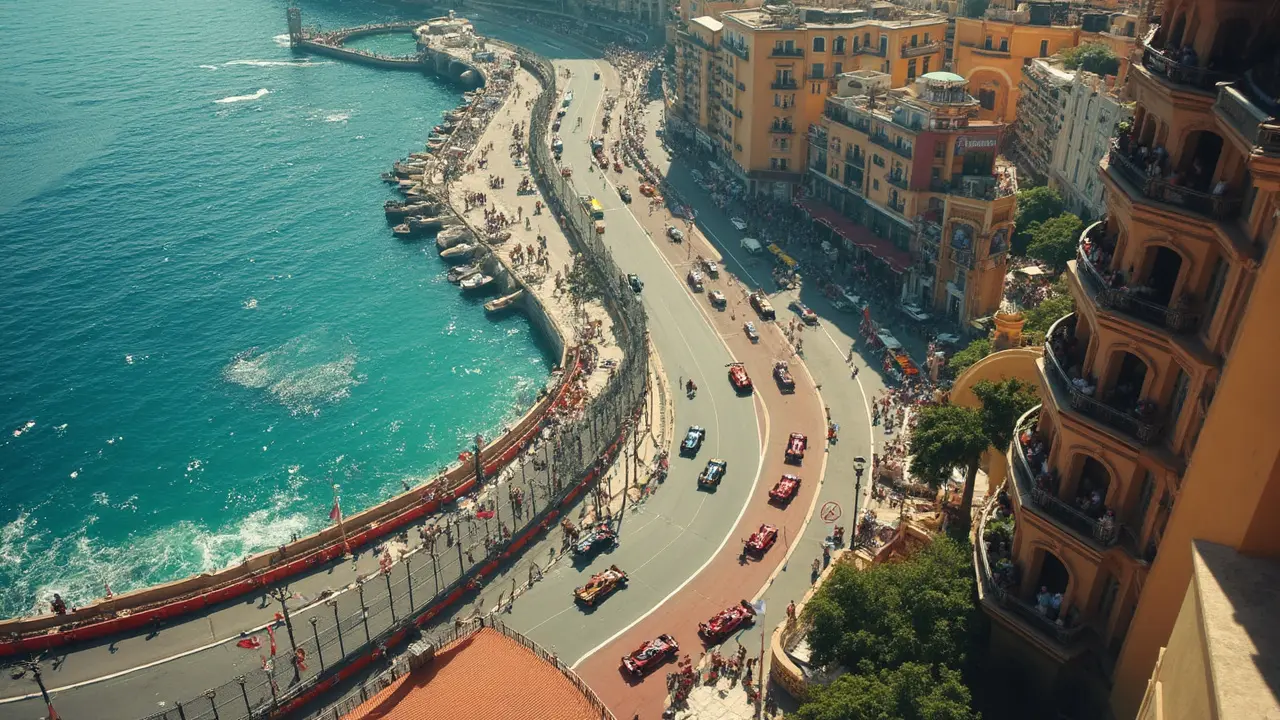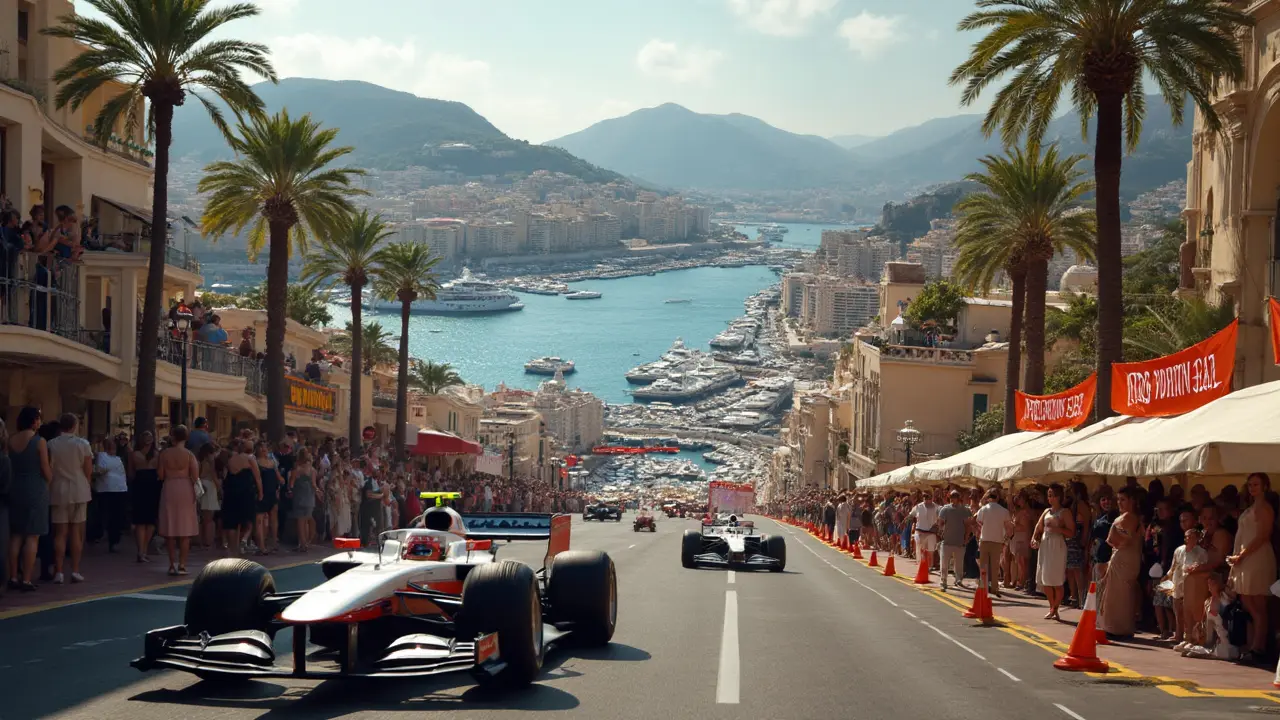Ever see a Formula 1 car squeezing through city streets with barely an inch to spare? That’s Monaco for you. Forget wide racetracks—Monaco is all about sharp turns, zero room for mistakes, and non-stop action. One wrong move, and you’re in the barriers, out of the race, and probably cursing under your helmet in five languages.
The craziest part? Drivers call this place 'the ultimate test' because there’s nowhere tougher. If you want to understand why drivers and fans lose their minds over the Monaco Grand Prix, look at the numbers: a lap here is just 3.34 kilometers, yet with 19 corners, nearly every second you’re dancing on the edge. Even the best mess up—think about how many times the favorites have shunted at Sainte Dévote or hit the wall at the Swimming Pool section.
If you’re dreaming of seeing the race in person, remember this: seats go fast and the best views often come from balconies, rooftops, or even fancy yachts parked right in the harbor. Not into glitz? There are spots by the track that’ll get you close enough to feel the cars shake your bones.
- The Heart of Monaco: Why This Track Is So Special
- Speed, Skill, and Sheer Luck: What Makes Racing Here Unique
- Inside the Paddock: How the Pros Tackle Monaco
- Tips for Watching Monaco Like a Veteran
The Heart of Monaco: Why This Track Is So Special
Some races blend together, but the Monaco Grand Prix always stands out. The track slices straight through Monte Carlo and La Condamine, right past luxury hotels, casinos, and the harbor where million-dollar yachts bob. The event’s roots go all the way back to 1929, making it the second-oldest F1 race behind Monza. That history alone draws everyone from royalty to Hollywood stars every year.
The craziest thing? Monaco’s layout is basically unchanged since those early days. It’s still insanely narrow, twisty, and doesn’t give drivers a second to relax. This is the shortest circuit on the calendar, but it has the most corners packed into any F1 track. To put it simply, a tiny error here really hurts.
| Track Length | 3.337 km (2.074 mi) |
|---|---|
| Number of Corners | 19 |
| Fastest Recorded Lap (Race) | 1:14.260 - Lewis Hamilton (2021) |
| Race Distance | 78 laps (260.286 km) |
| First Grand Prix | 1929 |
Forget about overtaking like on slick circuits such as Silverstone. In Monaco, passing is rare. That’s why qualifying is huge. Start at the front, and you’ve got a shot. Start way back, and you’ll be fighting traffic all afternoon. Some drivers even say finishing a race here feels better than winning most others simply because it’s so brutal from lights out to the checkered flag.
It’s not just the racing that’s different—a typical Sunday in Monaco is wild. Helicopters buzz overhead, superyachts are packed with parties, and nearly every balcony is stuffed with fans. The noise echoes through the city, everyone’s dressed up, and you’ll spot familiar faces from music, sports, and movies in the paddock.
At the end of the day, no other race throws you so close to the drama—and leaves so little margin for error. That’s why Monaco holds its legendary status year after year.
Speed, Skill, and Sheer Luck: What Makes Racing Here Unique
The Monaco Grand Prix isn’t just fast cars in a fancy place. The magic comes from how everything works against the drivers: the streets are insanely narrow, most bends are sharp as a kitchen knife, and there’s barely any runoff area. Miss your braking point by a meter and you’re naming a new scar on your car—and maybe your ego.
Monaco has the lowest average speeds in Formula 1. Don't get fooled though, because the action is intense. Lap times hover around the 1 minute 12 seconds mark, and drivers shift gears about 50 times per lap. Steering here is exhausting since there's almost never a straight moment to relax. Even qualifying is like threading a needle—whoever grabs pole position has the best shot because overtaking is nearly impossible. In fact, in the past ten races, the winner has started from pole eight times.
Check how Monaco stacks up compared to other iconic tracks:
| Track | Average Lap Speed (km/h) | Number of Turns | Chance of Safety Car (%) |
|---|---|---|---|
| Monaco | 160 | 19 | 80 |
| Monza | 250 | 11 | 30 |
| Spa-Francorchamps | 220 | 20 | 60 |
See those Safety Car stats? Crashes and stalled cars block the circuit almost every year, so you never know when a lucky (or unlucky) break will flip the race. If you're betting on someone to win, hold off until the last lap, because even leaders can hit the wall in the tunnel or bobble a pit stop.
A few things make the racing even crazier:
- There’s no room for error, so drivers call it a mental marathon.
- Grip changes fast with the temperature—the track isn’t used much by cars, so it’s always “green” and unpredictable.
- Pit crews get put under pressure for lightning fast stops—messing up a tire change can wreck the day since there’s no space to recover lost track position.
At Monaco, pure speed is nothing without nerves of steel and a big dose of luck. Even world champs say winning here feels different because you earn every centimeter. Watching this, you never get bored—there’s too much on the line in every single corner.

Inside the Paddock: How the Pros Tackle Monaco
The Monaco Grand Prix isn’t just another race weekend for drivers or their teams—it’s a nerve-wracking checklist of small wins and near-misses. In the paddock, crews treat every lap like it’s the final exam of the season. F1 teams literally bring special car setups just for the streets of Monte Carlo because what works elsewhere usually doesn’t cut it here. Lower suspension, maxed-out downforce, and steering that turns on a dime—these are must-haves in Monaco.
Drivers? They need pinpoint focus from the moment they leave the garage. Forget relaxing on straights—there are almost none. Monaco’s the only track where some drivers never even bother shifting into top gear during qualifying laps. And scrapes against barriers aren’t rare; in fact, some pros say if you aren’t flirting with the wall, you aren’t fast enough. Lewis Hamilton called getting a perfect lap here the closest thing to 'driving on a knife’s edge.'
Let’s talk numbers for a sec. Here’s a quick comparison between Monaco and a more traditional circuit:
| Stat | Monaco Grand Prix | Silverstone Grand Prix |
|---|---|---|
| Track length | 3.34 km | 5.89 km |
| Number of corners | 19 | 18 |
| Top speed (km/h) | roughly 290 | about 330 |
| Average lap time | 1:10 | 1:27 |
With overtaking almost impossible, qualifying is everything. That’s why teams push for every millisecond on Saturday. Mistakes are brutal—last year, several top cars missed Q3 because they brushed the wall by just a couple centimeters.
- Radio communication gets turbocharged here. No meaningless chit-chat, just instant warnings about traffic or changing track conditions.
- Some drivers walk the track themselves right before the action starts, looking for odd bumps or bits of loose rubber that could mess up a lap.
- Pit stops are rare compared to other circuits because it’s so tough to find space to rejoin safely. Teams often gamble with strategy, hoping for a lucky safety car.
If you hear folks say the Monaco Grand Prix is all about who keeps their cool, believe it. The pros who stand out here are the calmest under pressure, laser-focused as they fly past landmarks like the Casino and the harbor. Even the smallest mistake gets you bitten—ask any driver who's kissed the wall before the finish line.
Tips for Watching Monaco Like a Veteran
Want the full Monaco Grand Prix experience without looking like a first-timer? Here’s the real deal straight from seasoned race-goers and locals.
- Monaco Grand Prix tickets sell out fast—like, crazy fast. If you want trackside seats or fancy grandstands at Casino Square or the swimming pool section, you need to book them months in advance. Don’t wait until Easter, or you’ll be stuck refreshing resale sites or trying your luck for standing room.
- The best views aren’t always in the stands. Some apartments overlooking the circuit rent out spots on their balconies—yes, it’s expensive, but you can see almost half the lap and skip the crowds. A few local bars and cafes along the route also offer reservations, letting you eat, drink, and watch the action at the same time.
- Boats in the harbor are another story. If you have the budget (and friends in the right places), watching from a yacht is the stuff of legends—think VIP, unlimited champagne, and the closest you can get to the cars outside the pit wall. But even if you don’t have yacht access, just stroll the docks and soak in the glitz.
- Pack light. Security is pretty strict: no big backpacks, no glass bottles, and no chairs. Bring a good camera, a portable charger, and something for shade. The sun bakes the grandstands in the afternoon.
- Getting around Monaco during race weekend is its own adventure. Trains from Nice run extra often, and most fans use them because driving and parking in Monaco that week is a nightmare. Even F1 drivers park outside the city and take scooters or golf carts through the crowds. If you want to blend in, use public transport and wear comfortable shoes—expect to walk a lot, including up some steep streets.
Timing matters: Practice sessions on Friday and qualifying on Saturday offer just as much drama as the race. Arrive early because lines to get in start building hours before the lights go out.
"Even folks who've been coming for years swear by the Friday sessions—it's fewer crowds, cheaper tickets, and you still get all the noise," says Giles Richards of The Guardian.
If you want memorabilia, check out the pop-up booths around Place du Casino and on Avenue Princesse Grace. Official gear sells out fast and the prices only go up as race day gets closer.




